Research Area A - Publications 2012
27-Dec-2012
Advanced Functional Materials, online article
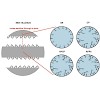
Oligonucleotides used in gene therapy and silencing are fragile compounds that degrade easily in biological environments. Porous biocompatible carrier particles may provide a useful strategy to deliver these therapeutics to their target sites. Development of appropriate delivery vehicles, however, requires a better understanding of the oligonucleotide-host ...
14-Dec-2012
Science, online article

We demonstrate that, at constant temperature, hundreds of DNA strands can cooperatively fold a long template DNA strand within minutes into complex nanoscale objects. Folding occurred out of equilibrium along nucleation-driven pathways at temperatures that could be influenced by the choice of sequences, strand lengths, and chain topology. Unfolding occurred in ...
27-Nov-2012
PNAS, online article

Mechanical forces are important signals for cell response and development, but detailed molecular mechanisms of force sensing are largely unexplored. The cytoskeletal protein filamin is a key connecting element between the cytoskeleton and transmembrane complexes such as integrins or the von Willebrand receptor glycoprotein Ib. Here, we show using single-molecule ...
19-Nov-2012

A key goal for nanotechnology is to design synthetic objects that may ultimately achieve functionalities known today only from natural macromolecular complexes. Molecular self-assembly with DNA has shown potential for creating user-defined 3D scaffolds, but the level of attainable positional accuracy has been unclear. Here we report the cryo-EM structure and a ...
16-Nov-2012
Science, 2012, DOI: 10.1126/science.1225624, Vol. 338 no. 6109 pp. 932-936 published on 16.11.2012

We created nanometer-scale transmembrane channels in lipid bilayers by means of self-assembled DNA-based nanostructures. Scaffolded DNA origami was used to create a stem that penetrated and spanned a lipid membrane, as well as a barrel-shaped cap that adhered to the membrane, in part via 26 cholesterol moieties. In single-channel electrophysiological ...
09-Nov-2012
Biomacromolecules, online article
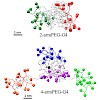
Hybrid dendritic-linear block copolymers based on a 4-arm poly(ethylene glycol) (PEG) core were synthesized using an accelerated AB2/CD2 dendritic growth approach through orthogonal amine/epoxy and thiol-yne chemistries. The biological activity of these 4-arm and the corresponding 2-arm hybrid dendrimers revealed an enhanced, dendritic effect with an exponential ...
30-Oct-2012
PNAS, online article
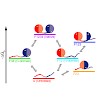
Calmodulin is the primary calcium binding protein in living cells. Its function and structure depend strongly on calcium concentration. We used single molecule force spectroscopy by optical tweezers to study the folding of calmodulin in the physiologically relevant range. We find that full-length calmodulin switches from a rich and complex folding behavior at ...
02-Oct-2012
Nature Communications, online article
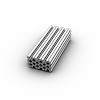
Molecular self-assembly with DNA offers a route for building user-defined nanoscale objects, but an apparent requirement for magnesium in solution has limited the range of conditions for which practical utility of such objects may be achieved. Here we report conditions for assembling templated multi-layer DNA objects in the presence of monovalent ions, showing ...
10-Sep-2012
Journal of Controlled Release, online article
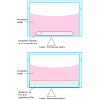
The pathways of interferon α2a release from a triglyceride based implant system were studied by single molecule fluorescence microscopy. The protein was labeled with a stable fluorescent dye ATTO647N, freeze-dried and embedded into the lipid matrix via twin-screw extrusion. The implant system consisted of a pore-forming agent (water soluble PEG 6000) and two ...
30-Aug-2012
Retrovirology, online article

It is thought that foamy viruses (FVs) enter host cells via endocytosis because all FV glycoproteins examined display pH-dependent fusion activities. Only the prototype FV (PFV) glycoprotein has also significant fusion activity at neutral pH, suggesting that its uptake mechanism may deviate from other FVs. To gain new insights into the uptake processes of FV in ...
12-Jul-2012
Spectroscopy, online article
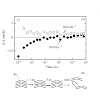
The light-driven disassembly process of amyloid-like structures formed by azobenzene model peptides is studied by time-resolved mid-IR spectroscopy from nanoseconds to minutes. The investigated peptide consists of two amino acid strands connected by the azobenzene switch. The peptides aggregate to amyloid-like structures when the azobenzene chromophore is in the ...
12-Jun-2012
New Journal of Physics, 2012, doi:10.1088/1367-2630/14/6/065006, 14 published on 12.06.2012
New Journal of Physics, online article
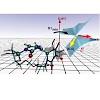
The photophysical and photochemical processes driving the formation of the ultraviolet (UV)-induced DNA Dewar lesion from the T(6-4)T dimer are investigated by time-resolved spectroscopy and quantum chemical modelling. Time-resolved absorption and emission spectroscopy in the UV revealed a biexponential decay of the electronically excited state (S1) with time ...
28-May-2012
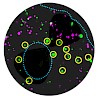
Therapeutic nanoparticles can be directed to cancer cells by incorporating selective targeting ligands. Here, we investigate the epidermal growth factor receptor (EGFR)-mediated endocytosis of gene carriers (polyplexes) either targeted with natural EGF or GE11, a short synthetic EGFRbinding peptide. Highly sensitive live-cell fluorescence microcopy with single ...
25-May-2012
Journal of Chemical Physics, online article
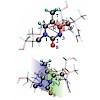
Non-adiabatic on-the-fly molecular dynamics (NA-O-MD) simulations require the electronic wavefunction, energy gradients, and derivative coupling vectors in every timestep. Thus, they are commonly restricted to the excited state dynamics of molecules with up to ≈20 atoms. We discuss an approximation that combines the ONIOM(QM:QM) method with NA-O-MD simulations to ...
24-May-2012
ACS Nano, online article

Three-dimensional tracking of single-walled carbon nanotubes (SWNT) with an orbital tracking microscope is demonstrated. We determine the viscosity regime (above 250 cP) at which the rotational diffusion coefficient can be used for length estimation. We also demonstrate SWNT tracking within live HeLa cells and use these findings to spatially map corral volumes ...
04-May-2012
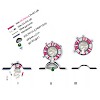
Advances in fluorescence methodologies make it possible to investigate biological systems in unprecedented detail. Over the last few years, quantitative live-cell imaging has increasingly been used to study the dynamic interactions of viruses with cells and is expected to become even more indispensable in the future. Here, we describe different fluorescence ...
02-May-2012
Advanced Healthcare Materials, online article
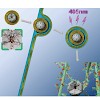
Different bioactive molecules are released into living cells from lipid-covered mesoporous silica nanoparticles. The release is triggered by light, as the particles feature covalently attached photosensitizers as membrane-opening agents. It is demonstrated that the particles achieve endosomal escape and that they release their cargo into the cytosol.
04-Apr-2012
Angewandte Chemie, online article
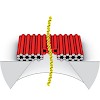
Molecular self-assembly with DNA enables the construction of soluble objects with nanometer to micrometer scale absolute dimensions and custom chemical features, including crystals, patterns, bricks, boxes, and curved shapes, that can open novel paths to scientific discovery. Herein, we report on DNA nanoplates for nanopore-based sensing approaches. Nanopores in ...
16-Mar-2012
The Journal of Physical Chemistry B, 2012, DOI: 10.1021/jp300982a, 116 (14), pp 4181–4191 published on 16.03.2012
The Journal of Physical Chemistry B, online article

Two hemithioindigo–hemistilbene (HTI) derivatives, designed to operate as structural switches in peptides, as well as two HTI peptides are characterized by ultrafast spectroscopy in the visible and the infrared. The two HTI switches follow the reaction scheme published for other HTI compounds with a picosecond excited state reaction (τ1 ≈ 6 ps) and isomerization ...
14-Mar-2012
Nano Letters, online aticle
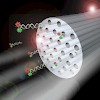
The diffusion dynamics of terrylene diimide (TDI) dye molecules and dye-labeled double-strand DNA were studied in micrometer long silica filaments containing collinear, oriented mesopores using single molecule fluorescence microscopy. TDI was used as a stable and hydrophobic probe molecule for single molecule structural analysis. We used template-free mesoporous ...
07-Mar-2012
Biophysical Journal, online article
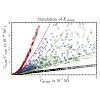
Fluorescence cross-correlation spectroscopy (FCCS) is used to determine interactions and dissociation constants (Kds) of biomolecules. The determination of a Kd depends on the accurate measurement of the auto- and cross-correlation function (ACF and CCF) amplitudes. In the case of complete binding, the ratio of the CCF/ACF amplitudes is expected to be 1. However, ...
01-Mar-2012
ChemPhysChem, online article
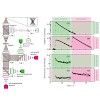
Single-pair Förster resonance energy transfer (spFRET) experiments using single-molecule burst analysis on a confocal microscope are an ideal tool to measure inter- and intramolecular distances and dynamics on the nanoscale. Different techniques have been developed to maximize the amount of information available in spFRET burst analysis experiments. ...
22-Feb-2012
Biophysical Journal, online article
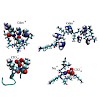
The molecular conformation of proteins is sensitive to the nature of the aqueous environment. In particular, the presence of ions can stabilize or destabilize (denature) protein secondary structure. The underlying mechanisms of these actions are still not fully understood. Here, we combine circular dichroism (CD), single-molecule Förster resonance energy ...
14-Feb-2012
PLoS Biology, online article

Active muscles generate substantial mechanical forces by the contraction/relaxation cycle, and, to maintain an ordered state, they require molecular structures of extraordinary stability. These forces are sensed and buffered by unusually long and elastic filament proteins with highly repetitive domain arrays. Members of the myomesin protein family function as ...
09-Jan-2012
Angewandte Chemie, online article
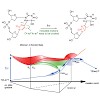
Living organisms exposed to sunlight are constantly challenged by the formation of UV-induced lesions in DNA, which induce cell death and cause mutations. UVirradiation of TpT and TpC sequences leads to the formation of two primary lesions, namely cyclobutane-pyrimidine dimers (CPD)and lesions, as depicted in Scheme 1. These lesions possess an additional ...
03-Jan-2012
PNAS, online article
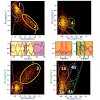
The molecular chaperone and heat shock protein 90 (Hsp90) exists mainly as a homodimer in the cytoplasm. Each monomer has an ATPase in its N-terminal domain and undergoes large conformational changes during Hsp90’s mechanochemical cycle. The threecolor single-molecule assay and data analysis presented in the following allows one to observe at the same time ...










